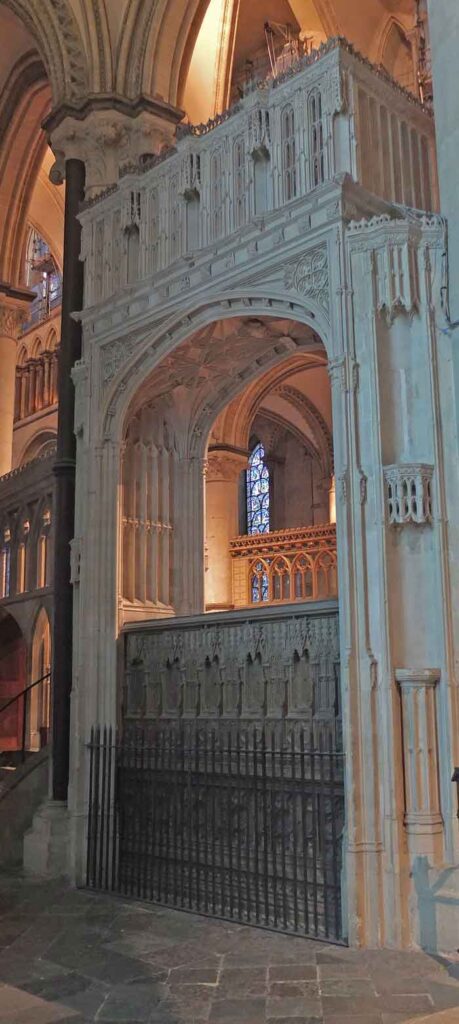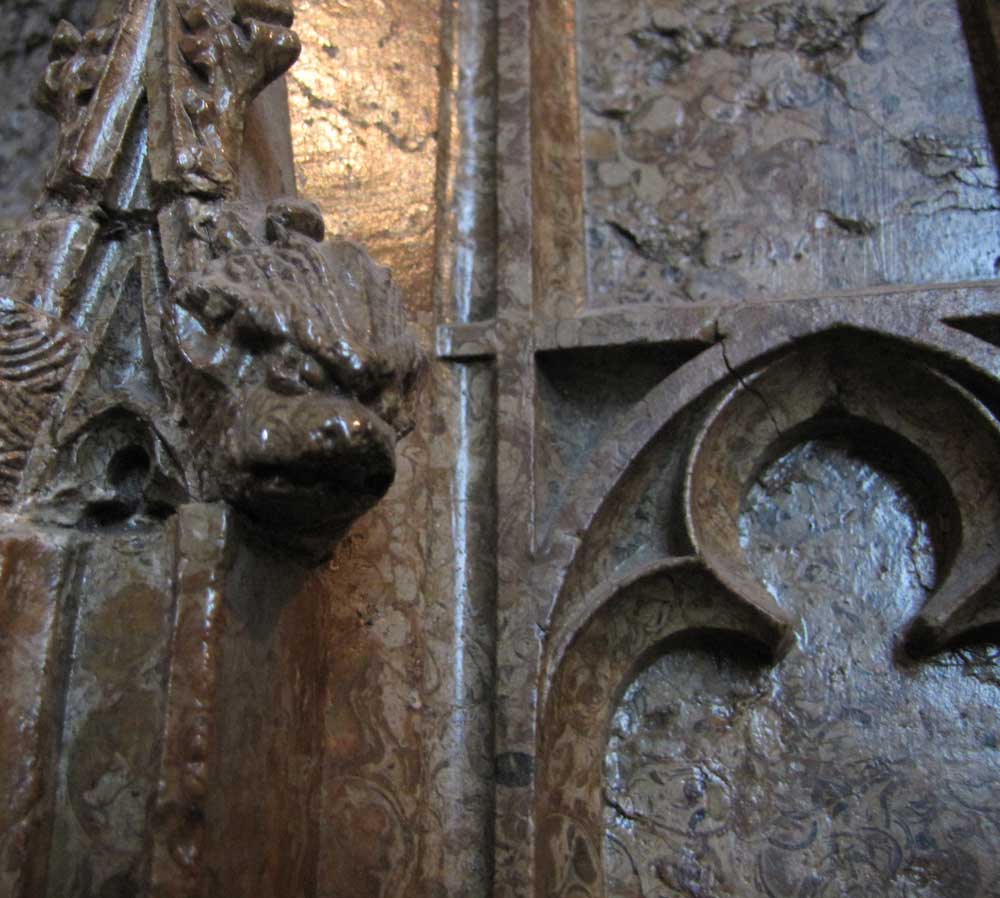Archbishop of Canterbury (1454-1486) – for more click here
Born into a wealthy family, Bourchier was promoted to the bishopric of Worcester in 1434, only a year after his ordination. Nine years later he was translated to become Bishop of Ely before being appointed Archbishop. Bourchier died at Knole, a property he had purchased in 1456. His body was moved to Maidstone Church and from there on to Faversham Abbey. From Faversham it was carried in state to Canterbury to be buried in a tomb already constructed. His tomb consists of a deceptively ornate tomb chest and canopy. The generous gap between the two is said to be the result of an accession by Bourchier to the cathedral monks that his monument would not occlude the light from the windows of the north aisle.
The tomb’s carving is of the highest quality. The detail of the many and various tiny animal heads and the repeated knot motif are a delight, and all the more so for being carved in the local Bethersden Marble. Although the designer is unknown it is believed the tomb was produced by one of the London court workshops. Bourchier’s heraldic device, the Bourchier knot, appears many times on the monument. It is a modern-day granny knot and used here as a rebus of a butcher’s knot deriving from the similar pronunciations of the family surname and the French word for a butcher, “boucher”. A second motif also appears on the tomb alongside the carved knot: the rose-en-soleil badge of King Edward IV whom Bourchier had crowned and later married to Elizabeth Woodvile. The badge combines the white rose of the House of York with the sunburst emblem of a predecessor, Richard II. The tomb has been badly damaged by iconoclasts and the images taken from their niches. A brass fillet inscription girdles the tomb. It has been suggested that the archbishop’s tomb was to double as an Easter Sepulchre, situated as it was in the traditional place to the north of the High Altar.
The canopy is equally ornate with a four-centred arch supporting a form of entablature with a fenestrated and niched cornice, sadly now also lacking figures. In the spandrels are finely carved quatrefoils and mouchettes. The whole canopy is made of Caen Stone and this monument canopy is an exemplar of the stone’s excellent carving qualities.


